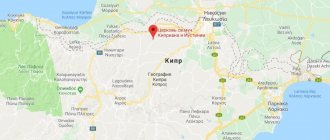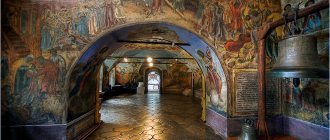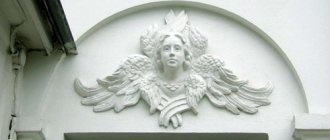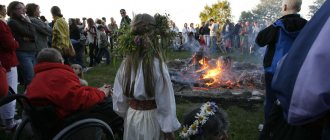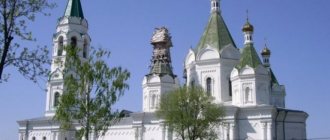Mir
Russia Sevastopol St. Nicholas Church-Monument (Sevastopol) Map loading in progress...
{"format":"leaflet","minzoom":false,"maxzoom":false,"limit":50,"offset":0,"link":"all","sort":[""], "order":[],"headers":"show","mainlabel":"","intro":"","outro":"","searchlabel":"\u2026 \u0441\u043b\u0435\ u0434\u0443\u044e\u0449\u0438\u0435 \u0440\u0435\u0437\u0443\u043b\u044c\u0442\u0430\u0442\u044b","default":"","import-annotation":false,"width ":"auto","height":"350px","centre":{"text":"","title":"""link":"""lat":44.63628200000000134650690597482025623321533203125,"lon": 33.55838200000000171030478668399155139923095703125,"icon":""},"title":"","label":"","icon":"","lines":[],"polygons":[],"circles":[ ],"rectangles":[],"copycoords":false,"static":false,"zoom":8,"defzoom":14,"layers":["OpenStreetMap"],"image layers":[] ,"overlays":[],"resizable":false,"fullscreen":true,"scrollwheelzoom":true,"cluster":false,"clustermaxzoom":9,"clusterzoomonclick":true,"clustermaxradius":80, "clusterspiderfy":true,"geojson":"","clicktarget":"","showtitle":true,"hidenamespace":false,"template":"","userparam":"","activeicon": "","pagelabel":false,"ajaxcoordproperty":"","ajaxquery":"","locations":[{"text":"\u003Cb\u003E\u003Ca href=\"/palomnik/%D0% A1%D0%B2%D1%8F%D1%82%D0%BE-%D0%9D%D0%B8%D0%BA%D0%BE%D0%BB%D1%8C%D1%81%D0%BA %D0%B8%D0%B9_%D1%85%D1%80%D0%B0%D0%BC-%D0%BF%D0%B0%D0%BC%D1%8F%D1%82%D0%BD% D0%B8%D0%BA_(%D0%A1%D0%B5%D0%B2%D0%B0%D1%81%D1%82%D0%BE%D0%BF%D0%BE%D0%BB%D1 %8C)\» title=\»\u0421\u0432\u044f\u0442\u043e-\u041d\u0438\u043a\u043e\u043b\u044c\u0441\u043a\u0438\u0439 \u0445\u0440\u0430\u04 3c-\ u043f\u0430\u043c\u044f\u0442\u043d\u0438\u043a (\u0421\u0435\u0432\u0430\u0441\u0442\u043e\u043f\u043e\u043b\u044c)\»\u003E\ u0421\u0432\u044f\ u0442\u043e-\u041d\u0438\u043a\u043e\u043b\u044c\u0441\u043a\u0438\u0439 \u0445\u0440\u0430\u043c-\u043f\u0430\u043c\u044f\u 0442\u043d\u0438\u043a ( \u0421\u0435\u0432\u0430\u0441\u0442\u043e\u043f\u043e\u043b\u044c)\u003C/a\u003E\u003C/b\u003E\u003Chr /\u003E\u003Ca href=\"/palom nik/% D0%A1%D0%B2%D0%BE%D0%B9%D1%81%D1%82%D0%B2%D0%BE:%D0%90%D0%BD%D0%BD%D0%BE%D1 %82%D0%B0%D1%86%D0%B8%D1%8F\" title=\"\u0421\u0432\u043e\u0439\u0441\u0442\u0432\u043e:\u0410\u043d\u043d\u043e\ u0442\u0430\u0446\u0438\u044f\»\u003E\u0410\u043d\u043d\u043e\u0442\u0430\u0446\u0438\u044f\u003C/a\u003E: \u0423\u043d\u043 8\u043a\u0430\u043b \u044c\u043d\u044b\u0439 \u043e\u0431\u0440\u0430\u0437\u0435\u0446 \u043a\u0443\u043b\u044c\u0442\u043e\u0432\u043e\u0439 \u0430\u0440\u0445\u0438\u0442 XIX \u0432\u0435\u043a\u0430: \u0445\u0440\u0430\u043c-\u043f\u0438\u0440\u0430\u043c\u0438\u0434\u0430 \u0438 \u043e\u0434\u043d\u043e\u0432\u0440\u0435 \u043c\u0435\u043d\u043d\ u043e\u043f\u0430\u043c\u044f\u0442\u043d\u0438\u043a\u0437\u0430\u0449\u0438\u0442\u043d\u0438\u043a\u0430\u043c\u0421\u 0435\u0432\u0430\u0441\u0442\ u043e\u043f\u043e\u043b\u044f \u0432 \u043f\u0435\u0440\u0438\u043e\u0434 \u041a\u0440\u044b\u043c\u0441\u043a\u043e\u0439 \ u0432\u043e\u0439\u043d\u044b. \u041f\u0440\u0438 \u0445\u0440\u0430\u043c\u0435 \u0434\u0435\u0439\u0441\u0442\u0432\u0443\u0435\u0442 \u0433\u043e\u0441 \u0442\u0438\u043d\u0438\u0446 \u0430 \u0434\u043b\u044f \u043f\u0430\u043b\u043e\u043c\u043d\u0438\u043a\u043e\u0432.","title":"\u0421\u0432\u044f\u0442\u043e -\u041d\ u0438\u043a\u043e\u043b\u044c\u0441\u043a\u0438\u0439 \u0445\u0440\u0430\u043c-\u043f\u0430\u043c\u044f\u0442\u043d\u0438\u0 43a (\u0421\u0435\u0432\ u0430\u0441\u0442\u043e\u043f\u043e\u043b\u044c)","link":"","lat":44.63628200000000134650690597482025623321533203125,"lon":33.5583820 0000000171030478668399155139923095703125,"icon":""}],"imageLayers": []}
44.63635; 33.558355
Russia, Sevastopol, Bogdanova street, 43
Sevastopol
Russia
Telephone:
+7 869 271-12-07
St. Nicholas Church
- an Orthodox church-monument in Sevastopol in the shape of a pyramid, at the Bratsk Memorial Cemetery. One of the main architectural symbols of Sevastopol. A unique example of religious architecture of the second half of the 19th century: a pyramid temple and at the same time a monument to the defenders of Sevastopol during the Crimean War. There is a hotel for pilgrims at the temple.
History[edit]
The temple was built from 1857 to 1870.
In August 1898, Nicholas II visited the Brotherly Cemetery and the Church of St. Nicholas with Empress Alexandra Feodorovna and children. Having, together with Admiral General Grand Duke Alexei Alexandrovich and Grand Duke Mikhail Alexandrovich, inspected the ships of the revived Black Sea Fleet and troops on the Kulikovo field near Sevastopol, on August 23 the emperor crossed from the Grafskaya pier to the North side. In an open carriage, accompanied by a small retinue, the imperial couple arrived at the Church of St. Nicholas, where they listened to the funeral liturgy, which was performed by the rector of the Admiralty Cathedral, co-served by the archpriest from the Standard yacht and the dean of the 13th Infantry Division.
Upon entering the church, Their Majesties were greeted by a priest, with a cross and holy water. At 2:25 a.m. The liturgy ended, and the Emperor and the Empress, upon leaving the church, deigned to walk around the cemetery church.
After the revolutionary events, relations between the atheistic Soviet state and the church turned out to be complex and sometimes tragic.
The Church of St. Nicholas was lucky, it was not demolished, like in the Balaklava St. George Monastery - the ancient Church of St. George the Victorious, in which Alexander Pushkin visited the monastery in September 1820, like the Church of St. Nicholas in Inkerman, the chapel of St. George the Victorious in Kady- Some...
During the Second Defense (1942-1944), the temple-monument suffered greatly: the top of the building was destroyed, a huge cross fell to the ground, and part of it broke off. The building was restored after the Great Patriotic War in its original form.
The temple restoration project was developed in Kyiv by the research restoration department of the Ukrainian Specialized Scientific and Production Directorate under the leadership of I. L. Shmulson.
By the summer of 1974, 143,970 rubles were spent on restoration inside the temple. But soon this work was suspended due to lack of funds.
The Council for Religious Affairs under the Council of Ministers of the USSR in August 1988, on the recommendation of the executive committee of the Sevastopol City Council of People's Deputies, decided the fate of the temple - by registering the society of the Russian Orthodox Church with the transfer to it of a “prayer building in the city of Sevastopol” - the Church of St. Nicholas at the Fraternal Cemetery.
On December 19, 1988, after the consecration, on the day of St. Nicholas, Archbishop of Myra in Lycia, miracle worker, Archpriest George Severin conducted the first service. After a sixty-year break, the sounds of the gospel were heard over the Fraternal Cemetery - the solemn and sacred ringing of the bells of the church belfry. On May 25, 1994, by order of the Sevastopol State Administration, St. Nicholas Church was returned to the ownership of the Orthodox community. This is how the optimal option for the practical restoration of the temple-monument and the spiritual revival of the shrine emerged. Already in the summer, the face of Christ the Savior shone again over the central western portal. A mosaic image was made from Venetian smalt in Mimora, the restoration center of Zagreb, under the direction of the artist Dragan Dokic. And two years later, through the efforts of the Dean, a mosaic painting of “The Myrrh-Bearing Wife” appeared above the eastern portal, replacing the lost one. It was made according to a drawing by the famous artist Gennady Yakovlevich Brusentsov.
Currently, the memorial church is in operation. Restoration continues, in particular the restoration of diorite boards and mosaics.
Thanks to the well-chosen image and location, the temple building is the architectural dominant of the northern side of Sevastopol. It is perfectly visible from many points in the central part of the city and its environs.
Story
The work on the temple project began with the court architect A.I. Stackenschneider. For unknown reasons, he transferred his project to A.A. Avdeev in 1857, who made serious changes to it. From the initial version of the construction project, only the pyramidal shape remained. During the same period, the first stone was laid in the foundation of the Church of St. Nicholas the Wonderworker.
Important. The shape of a pyramid for an Orthodox church is not traditional.
The idea of building a temple in Crimea belongs to Alexander II. M.I. were appointed responsible for the construction of the facility. Eppinger and Prince V.I. Vasilchikov. Initially it was planned to build the building in 3 years. In fact, the temple took 13 years to build. The reason for this delay was a lack of funding.
The church was built with private donations. During construction, technical difficulties also arose. When installing a diorite cross on top of the structure, its transverse part broke off.
The unique temple suffered serious damage during the Second World War. The belfry and cross were destroyed. It took more than 25 years to restore the site. The first service in the temple after its reconstruction was held only in 1988.
Currently, the temple and the Fraternal Cemetery belong to the Orthodox community of the city. The diorite cross that towered over the building was replaced with a granite cross cut with gold leaf. In the dark, its blue backlight turns on.
Important. Under the church there is a labyrinth with secret underground passages.
The interior decoration of the temple is luxurious. Its walls and ceiling are decorated with frescoes and mosaics. A choir has been organized at the church. Recordings of his singing can be heard on the official website of St. Nicholas Church or at the festive services held there. One of the Wikipedia pages is dedicated to the St. Nicholas Monastery.
Description[edit]
The height of the pyramid is 27 meters. Its base is a high plinth made of squares treated with large rustication. The squares are stamped with lead cast from bullets collected at battle sites. On four sides of the pyramid there are risalits. They have windows of elongated proportions from north to south; in the eastern risalit, where the altar is located, there are no windows.
Architect A. A. Avdeev was awarded the title of academician of architecture for the design of this temple. By choosing the shape of the Egyptian pyramid, the author sought to convey the idea of eternity. The pyramid is crowned by a massive 16-ton cross.
On the outside, on the walls of the church, there are 56 diorite boards with the names of the units that defended Sevastopol during the first defense of 1854-1855, indicating their numerical strength and the number of those killed in battles.
38 black marble boards with the names of 943 officers, generals and admirals who died during the defense of Sevastopol in 1854-1855 are mounted into the walls on the inside. The church was led by cast bronze doors, exquisitely crafted by Adolphe Moran.
Gallery
- Preliminary assembly of the cross in the workshop of the Yekaterinburg Art Fund.jpg
Preliminary assembly of the cross in the workshop of the Yekaterinburg Art Fund
- Coating of decorative elements of the cross with gold leaf.jpg
Coating of decorative elements of the cross with gold leaf
- Sending the Cross from the Yekaterinburg Art Fund to Sevastopol.jpg
Sending the Cross from the Yekaterinburg Art Fund to Sevastopol
- The rite of consecration of the cross in front of the temple.jpg
The rite of blessing the cross in front of the temple
- Veneration of the cross after the rite of consecration.jpg
Veneration of the cross after the rite of consecration
- A sailor of the Black Sea Fleet of the Russian Navy in front of the cross.jpg
Sailor of the Black Sea Fleet of the Russian Navy in front of the cross
- Cross installed on the temple.jpg
Cross installed on the temple
Pilgrim[edit]
Schedule of services[edit]
For the current schedule of services, visit the church website.
.
Where to stay[edit]
There is a hotel for pilgrims at the St. Nicholas Church-Monument.
It is located on the territory of the temple and provides accommodation services for pilgrimage groups.
Pilgrims are offered rooms for 5-10 people, three meals a day, showers with hot and cold water. Prices are minimal.
There are conditions for parking vehicles.
How to get there
You can get there by bus No. 109 to the Grafskaya Pristan stop, then transfer to a boat and sail to the Northern bus station. From there you need to take minibus No. 46 and get to the gas station stop.
You can get to the temple by car as follows:
There is a hotel at the temple where pilgrims can stay; the prices here are minimal, the rooms are equipped with all necessary amenities, and meals are provided to residents. Parking is provided for cars.
- Related Posts
- Tekie (abode) of dervishes: ancient monastery in Evpatoia
- Vladimir Cathedral on the territory of Tauride Chersonesos in Crimea
- Takhtaly-Jami Mosque in Bakhchisaray or a miracle of the intersection of historical events and cultures
An excerpt characterizing the Cross of the St. Nicholas Church-Monument in Sevastopol
“Who knows, your honor,” the hussar answered reluctantly. - Should there be an enemy in the area? - Rostov repeated again. “It may be him, or it may be so,” said the hussar, “it’s a night thing.” Well! shawls! - he shouted at his horse, moving under him. Rostov's horse was also in a hurry, kicking the frozen ground, listening to the sounds and looking closely at the lights. The screams of voices grew stronger and stronger and merged into a general roar that could only be produced by an army of several thousand. The fires spread more and more, probably along the line of the French camp. Rostov no longer wanted to sleep. The cheerful, triumphant cries from the enemy army had an exciting effect on him: Vive l'empereur, l'empereur! [Long live the Emperor, Emperor!] was now clearly heard by Rostov. - It’s not far, it must be beyond the stream? - he said to the hussar standing next to him. The hussar only sighed, without answering, and cleared his throat angrily. Along the line of hussars the tramp of a horse riding at a trot was heard, and from the night fog the figure of a hussar non-commissioned officer suddenly appeared, appearing like a huge elephant. - Your honor, generals! - said the non-commissioned officer, approaching Rostov. Rostov, continuing to look back at the lights and shouts, rode with the non-commissioned officer towards several horsemen riding along the line. One was on a white horse. Prince Bagration with Prince Dolgorukov and his adjutants went to see the strange phenomenon of lights and screams in the enemy army. Rostov, having approached Bagration, reported to him and joined the adjutants, listening to what the generals were saying. “Believe me,” said Prince Dolgorukov, turning to Bagration, “that this is nothing more than a trick: he retreated and ordered the rearguard to light fires and make noise in order to deceive us.” “Hardly,” said Bagration, “I saw them on that hill in the evening; If they left, they left there. Mr. Officer,” Prince Bagration turned to Rostov, “are his flankers still standing there?” “We’ve been standing there since the evening, but now I don’t know, your Excellency.” Order, I will go with the hussars,” said Rostov. Bagration stopped and, without answering, tried to make out Rostov’s face in the fog. “Well, look,” he said, after a pause. - I’m listening s. Rostov gave spurs to his horse, called out to non-commissioned officer Fedchenka and two more hussars, ordered them to follow him and trotted down the hill towards the continued screams. It was both scary and fun for Rostov to travel alone with three hussars there, into this mysterious and dangerous foggy distance, where no one had been before. Bagration shouted to him from the mountain so that he should not go further than the stream, but Rostov pretended as if he had not heard his words, and, without stopping, rode further and further, constantly being deceived, mistaking bushes for trees and potholes for people and constantly explaining his deceptions. Trotting down the mountain, he no longer saw either ours or the enemy’s fires, but heard the cries of the French louder and more clearly. In the hollow he saw in front of him something like a river, but when he reached it, he recognized the road he had passed. Having ridden out onto the road, he held his horse back, undecided: to ride along it, or to cross it and ride uphill through a black field. It was safer to drive along the road that became lighter in the fog, because it was easier to see people. “Follow me,” he said, crossed the road and began to gallop up the mountain, to the place where the French picket had been stationed since the evening. - Your Honor, here he is! - one of the hussars said from behind. And before Rostov had time to see something suddenly blackened in the fog, a light flashed, a shot clicked, and the bullet, as if complaining about something, buzzed high in the fog and flew out of earshot. The other gun did not fire, but a light flashed on the shelf. Rostov turned his horse and galloped back. Four more shots rang out at different intervals, and bullets sang in different tones somewhere in the fog. Rostov reined in his horse, which was as cheerful as he was from the shots, and rode at a walk. “Well then, well again!” some cheerful voice spoke in his soul. But there were no more shots.
